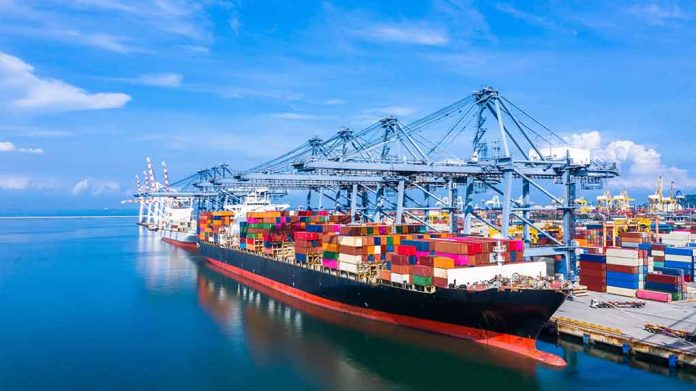
East Coast ports face potential shutdown as dockworkers and operators clash over automation in crucial contract talks.
At a Glance
- Contract between International Longshoremen’s Association and US Maritime Alliance expires January 15
- Dockworkers may strike from January 16 if no agreement is reached
- Automation remains a key sticking point in negotiations
- Potential strike could cost $5-10 billion per day and disrupt supply chains
- President-elect Trump’s support for dockworkers adds political complexity
Looming Strike Threatens East Coast Ports
The International Longshoremen’s Association (ILA) and the United States Maritime Alliance (USMX) are set to resume critical contract negotiations on January 7, with the specter of a potentially crippling strike hanging over East and Gulf Coast ports. The current master contract is set to expire on January 15, leaving little time for the two sides to bridge their differences, particularly on the contentious issue of port automation.
If an agreement isn’t reached, dockworkers are expected to halt operations starting January 16, a move that could severely impact container handling at ports responsible for about half of the U.S.’s container volumes. The stakes are high, with industry analysts estimating that a strike could cost between $5 billion and $10 billion per day.
Automation: The Core of the Conflict
At the heart of the dispute lies the issue of automation. The USMX advocates for increased automation to improve efficiency and keep U.S. ports competitive in the global market. However, the ILA views automation as a significant threat to job security for its members. This standoff has led to a breakdown in previous negotiations, with talks in November being called off due to the union’s firm stance against automation.
ILA President Harold Daggett has taken a hard line, opposing any contract that would allow for automation, including semi-automated cranes. This stance puts the union at odds with the USMX, which argues that restricting technology use would hinder the industry’s evolution and competitiveness.
Carriers and Shippers Brace for Impact
As the deadline approaches, major carriers are implementing contingency plans to minimize disruptions. Maersk, a leading shipping company, stated they are “actively developing contingency plans to minimise the impact of any labour disruptions.” The company is urging customers to manage their container logistics by January 15 to avoid potential complications.
Hapag-Lloyd, another major carrier, has announced plans to introduce surcharges from January 20 to cover additional costs from potential strikes. These surcharges will add $850 per TEU for imports to East and Gulf Coast ports, although they won’t apply to cargo already in transit or gated-in before the cutoff date.
Political Implications and Economic Consequences
The upcoming inauguration of Donald Trump as the 47th U.S. president adds another layer of complexity to the negotiations. Trump has expressed support for the dockworkers, opposing automation’s impact on jobs. This political element could potentially influence the outcome of the talks, with industry analyst Peter Tirschwell suggesting that Trump might pressure ocean carriers to concede or position himself as a mediator. “I’ve studied automation, and know just about everything there is to know about it. The amount of money saved is nowhere near the distress, hurt, and harm it causes for American Workers, in this case, our Longshoremen.” Donald Trump stated.
The potential economic consequences of a strike are severe. Industry executives warn of significant supply chain disruptions if a strike extends beyond a few weeks. “In the short term, there will be no impact because the inventory is here. If this goes two to three weeks, then you will start seeing empty shelves…it would be a big problem,” cautioned one executive.
As the January 15 deadline looms, all eyes are on the upcoming negotiations. The outcome will not only impact the future of East and Gulf Coast ports but could also have far-reaching effects on the U.S. economy and global trade dynamics. With automation at the center of this high-stakes showdown, the resolution of this dispute may set a precedent for how the shipping industry balances technological advancement with workforce concerns in the years to come.
Sources:
East Coast Port Strike Looms as Contract Talks Stall, Carriers Brace for Impact
East Coast dockworkers, port operators to resume talks next week as strike fears mount



